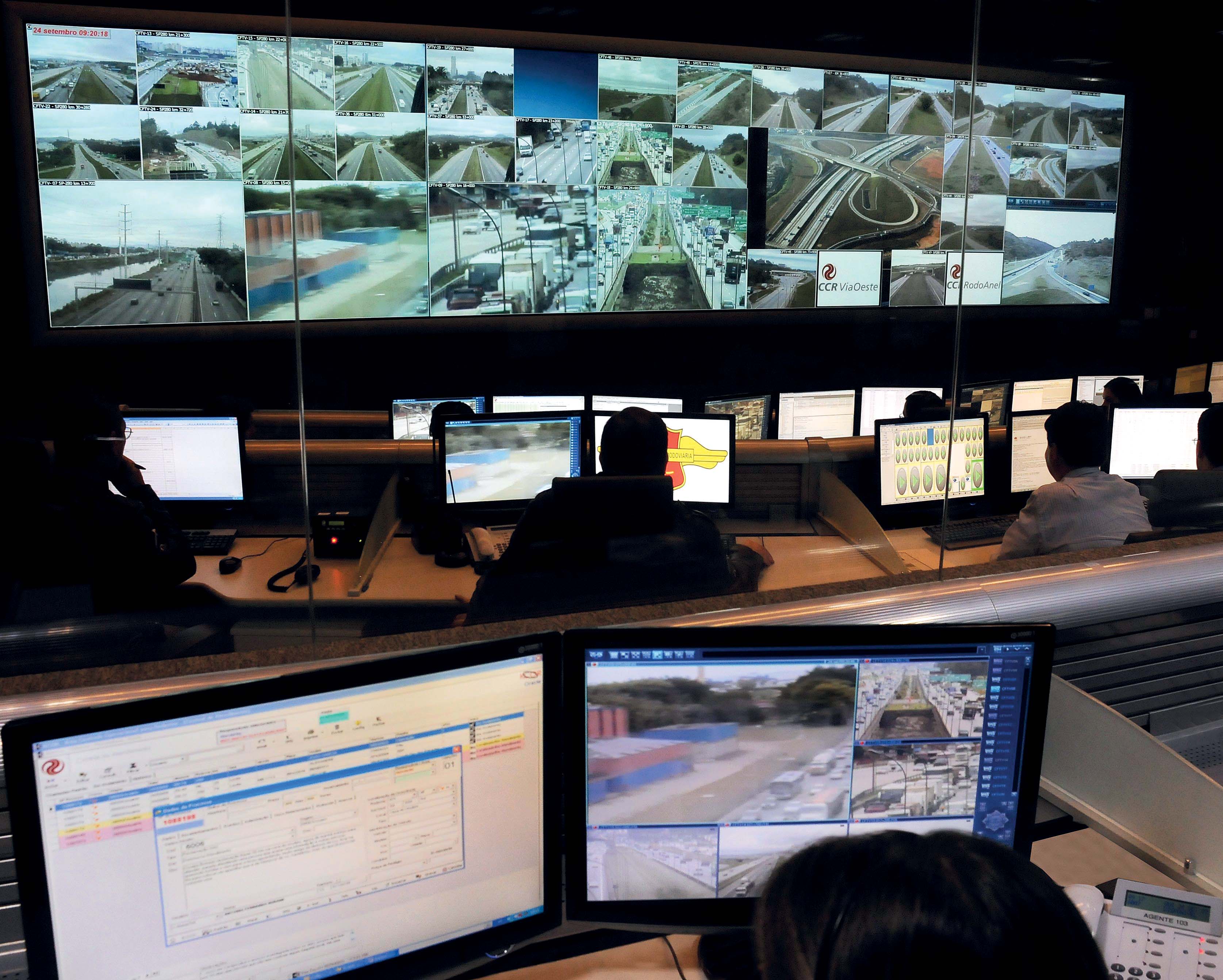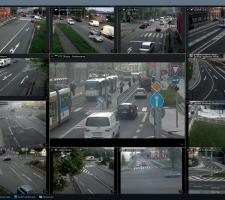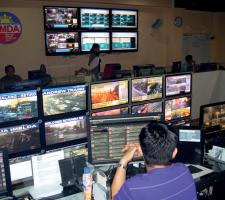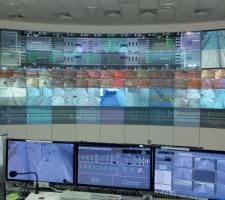
Monitoring traffic flows is set to become an even bigger challengebut a revolution in camera technology can help, as Patrik Anderson explains.
By 2025 almost 60% of the world’s population will live in urban areas and in those cities there will be an estimated 6.2 billion private motorised trips every day. In order to manage this level of traffic growth, traffic management centres (TMCs) will need to both increase their monitoring capabilities and be able to detect traffic problems quickly, efficiently and reliably – be that congestion, an accident, vehicle breakdown or fire.
To do this, there needs to be a deeper and broader understanding of traffic flows than is currently available to most TMCs. Additional traffic cameras are a cost-effective way to increase the monitoring and understanding of traffic in real time but the traffic operators in TMCs cannot monitor hundreds or even thousands of cameras at the same time. Today, traffic operators often rely on commuters reporting incidents but that call is not guaranteed and incidents can happen on quiet as well as busy roads.
Where traffic authorities can make a real leap forward in effectiveness and efficiency is by embracing the shift from analogue to network video and specifying a system that will allow intelligent video analysis to play a much more instrumental role in traffic management. Traffic authorities shouldn’t see this as upgrading their CCTV system as much as starting over with entirely new technological capabilities.
Intelligent camera capabilities - often called machine vision - is based on real-time computer processing of the camera image using detection, tracking or recognition algorithms. This process enables network cameras to automatically alert traffic management centre (TMC) staff to incidents from congestion, breakdowns, stopped vehicles and wrong-way driving. This greatly improves the efficiency of TMC staff and their ability to manage the ever increasing volume of traffic.
The latest network cameras directly record images as digital data and include a powerful processor which can be used to analyse the digital video stream in real time in parallel to delivering high quality video.
Smart video applications can be downloaded into the actual camera (much in the same way apps reside in smartphones) so there is no need to stream all video output to a central server for processing.
This not only frees up bandwidth for additional cameras or other networked devices, it means that each camera becomes an independent intelligent device that can monitor the traffic in its field of view and decide when to trigger an alarm.
Smart video applications already available include automatic incident alerts for slow traffic, queues, vehicles in the emergency lane, accidents, smoke or fire in a tunnel and a single camera can be programmed to detect several types of incident. The latest generation of
In some cases this means it is possible to reduce the number of cameras at one location, and because the technology detects incidents as soon as they happen TMC staff are alerted almost instantly rather than having to wait for them to discover it as they scroll through each camera in turn.
As a consequence the detection and reaction to most incidents is much faster and so minimises the subsequent congestion – or even danger – by, for example, adjusting traffic light phasing or using variable messaging. Also faster is the updating of live traffic information to all the relevant stakeholders - including the emergency services if required. Not only can this minimise injuries and casualties, but other road users can be quickly alerted to take alternative routes, so it also shortens the time needed to clear an incident and the time to get back to normal traffic flow.
As a result, network cameras are not only an efficient traffic monitoring tool that provide a detailed view of the traffic situation at any given time, in some instances they can be used in place of other sensors to automatically detect traffic deviations and incidents. It is also possible to configure the system to automatically display video in the TMC from relevant cameras only when an incident occurs and/or when an operator requests a live view.
Traditional analogue CCTV cameras are limited to about 0.4mega-pixels while network cameras can deliver video in multi-megapixel resolution, and some even provide HDTV video quality at up to 60 frames per second to capture detailed images of fast moving vehicles. So when an incident occurs, the network cameras’ superior image quality make it easier to identify people and objects and assess what is happening on the ground to provide much needed clarity for TMC staff to make better informed (and potentially life-saving) decisions.
The latest generation of high-end network cameras come with image-improving technologies to cope with the demands of the traffic environment such as blinding sunlight, blooming headlights and wet pavement reflections.
This provides a better balanced image and a more detailed overview of the traffic situation to help TMC staff see vehicle and traffic details even in the most challenging light and weather conditions.
Other image enhancing technologies now available for outdoor cameras include electronic image stabilisation (which reduces the effects of camera vibrations caused by the wind or passing traffic) and automatic defogging that detects and digitally removes any fog in a scene.
Shared intelligence
As network cameras are based on open IP standards, their video output can be accessed securely and flexibly via a computer or mobile device from anywhere; enabling stakeholder groups such as police, road service crews and emergency services to start assessing a situation even before they arrive at the scene. The cameras can simultaneously produce multiple parallel video streams, for example to stream high-resolution video to the TMC while also streaming a low-resolution version to the emergency team’s mobile devices before they arrive at the scene.Network camera systems can be configured to automatically record the video stream for a preset period of time following an incident that triggers an alarm, whereas video streams from analogue cameras are not generally recorded due to the bandwidth and storage challenges. Only recording video in case of an incident overcomes the capacity problems and can prove very useful information when investigating and reconstructing what happened, particularly as the improved image quality makes it a much more powerful tool in understanding the details.
In the City of Dubuque, Iowa, USA, police use footage from 260 installed network cameras to get an accurate account of accidents and other incidents. Some local citizens have even used the video to settle disputes over accidents without the need to go to court and the IP cameras have become an integral component of the city’s ITS.
The shift from analogue to digital technology is unstoppable and it is only a matter of time before all TMCs switch over to the more future-proof, IP-based technologies. With the latest generation of cameras and enclosures, the capabilities and service life far exceed anything their CCTV predecessors could offer and for traffic authorities the real challenge for is how to take maximum advantage from the inevitable upgrade.
• Patrik Anderson is the business development director for transportation at camera and video analytics supplier Axis Communications














